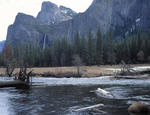http://www.cdc.gov/ncidod/dpd/parasites/cercarialdermatitis/factsht_cercarialdermatitis.htm
http://www.aocd.org/skin/dermatologic_diseases/swimmers_itch.html
http://www.cdc.gov/mmwr/preview/mmwrhtml/00001145.htm
http://www.dpd.cdc.gov/DPDX/HTML/Frames/A-F/CercarialDermatitis/body_CercarialDermatitis_page1.htm

Causal Agent:
Cercarial dermatitis is caused by the cercariae of certain species of schistosomes whose normal hosts are birds and mammals other than humans. These cercariae seem to have a chemotrophic reaction to secretions from the skin and are not as host-specific as other types of schistosomes. They attempt to, and, sometimes may actually, enter human skin. The penetration causes a dermatitis which is usually accompanied with intense itching, but the cercariae do not mature into adults in the human body. Cases of cercarial dermatitis can occur in both fresh and brackish water environments. One species of schistosome often implicated in cases of cercarial dermatitis is Austrobilharzia variglandis, whose normal hosts are ducks. The snail, Nassarius obsoletus, is the intermediate host for this species and can be found at marine beaches in temperate climates. Cercarial dermatitis should not be confused with seabather's eruption, which is caused by the larval stage of cnidarians (e.g., jellyfish). The areas of skin affected by seabather's eruption is generally under the garments worn by bathers and swimmers where the organisms are trapped after the person leaves the water. Cercarial dermatitis occurs on the exposed skin outside of close-fitting garments.
The cure for a fallacious argument is a better argument, not the suppression of ideas.
-- Carl Sagan
Edited 1 time(s). Last edit at 07/20/2009 08:39PM by Frank Furter.



